The 10 best mirrorless cameras in 2018
From bargains for beginners to pro-grade powerhouses, here are our top picks of the moment
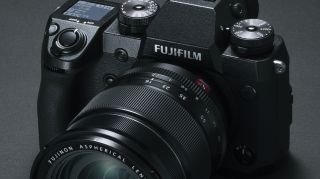
Mirrorless cameras have done much to change the idea that a small camera can't be a powerful one, and it's in this sector that we're typically seeing many developments surfacing first.
The fact that there are so many manufacturers involved means that variety is great, from selfie-friendly cameras you can get into a pocket to models that can handle super-fast burst shooting and pro-level video recording.
The following list rounds up 10 of the finest options on the market, taking innovation, performance and value for money into account. Whether you just need something portable for casual use or something that can rival the best DSLRs around, read on to find the best camera for your needs.
Read more: DSLR vs mirrorless cameras - How do they compare today?
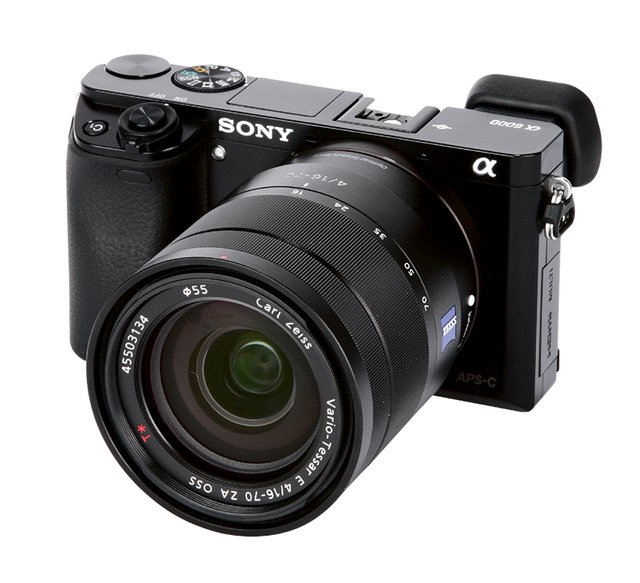
1. Sony A6000
Great for when the action presents itself – but a capable all-rounder too
Type: Mirrorless | Sensor: APS-C | Megapixels: 24.3MP | Lens mount: Sony E | Monitor: 3-inch tilting, 921,600 dots | Continuous shooting speed: 11fps | Viewfinder: Electronic | Max video resolution: 1080p | User level: Beginner/enthusiast
Superb AF system
11fps burst shooting with C-AF
Video not 4K
No touchscreen
It may have been launched well over three years ago, and has been updated by the A6300 and A6500 since then, but the significantly cheaper A6000 represents an excellent entry-point into the world of mirrorless photography. With a very capable autofocus system that blends 179 phase-detect AF points and 25 contrast-detect points, together with 11fps burst shooting with focus tracking, the camera is a particularly fine option for anyone shooting action, although the 24MP APS-C sensor, high-resolution OLED viewfinder, tilting LCD screen – sadly without touch functionality – and both Wi-Fi and NFC means that it holds masses of appeal for those shooting in other genres. The fact that it's not quite the newest camera makes it excellent value for money too.
2. Panasonic G80 / G85
Despite its price, the G80 packs masses of tech inside its DSLR-style body
Type: Mirrorless | Sensor: Micro Four Thirds | Megapixels: 16MP | Lens mount: Micro Four Thirds | Screen: 3-inch free-angle touchscreen, 1,040,000 dots | Viewfinder: Electronic | Continuous shooting speed: 9fps | Max video resolution: 4K | User level: Beginner/enthusiast
Great image quality
Excellent features-to-price ratio
16MP sensor may put some off
Noise reduction can be an issue
Panasonic has a knack for cramming its bodies with clever and useful features and delivering them at affordable prices, and the G80 is arguably the camera that manages this best in the current Lumix lineup. The 16MP sensor may not sound too flashy, but the lack of an anti-aliasing filter means that images result with strong detail. Add to that an excellent touchscreen that can be set to a range of angles, together with a high-resolution OLED viewfinder and built-in image stabilisation that can be made more effective with lens-based stabilisation, and you have a winner. And this is before we get to the camera’s ability to shoot 4K video. Or to let you vary the point of best sharpness after shooting with its Post Focus feature. Or to focus stack images. And it goes on and on...
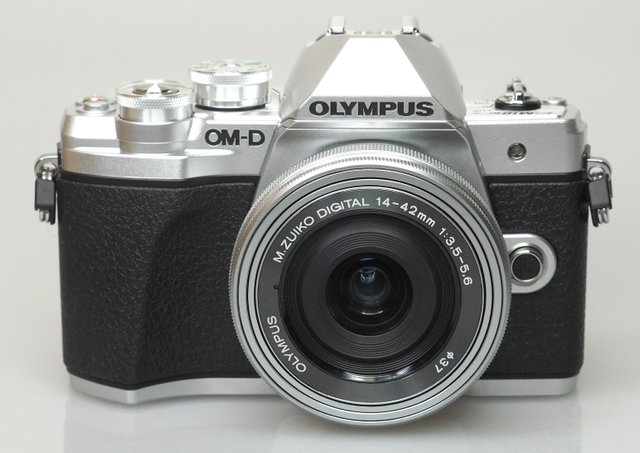
3. Olympus OM-D E-M10 Mark III
The newest OM-D model gains flagship processing power and 4K video
Type: Mirrorless | Sensor: Micro Four Thirds | Megapixels: 16.1MP | Lens mount: Micro Four Thirds | Screen: 3-inch tilting touchscreen, 1,037,000 dots | Viewfinder: Electronic | Max burst speed: 8.6fps | Max video resolution: 4K | User level: Beginner/enthusiast
4K video recording
Great image stabilisation
16.1MP beaten by competition
Not a huge change from Mark II
Not many cameras walk away with a full five stars upon being reviewed, but the O-MD E-M10 Mark III very much deserves its maximum score. With a similar handsome form as its forebears but a better processing engine, 4K video and a superior autofocus system on the inside, the camera is a much fitter rival to the likes of the Fujifilm X-T20 and Panasonic Lumix G80, although it still maintains so much that we loved from the Mark II version, such as the five-axis image stabilisation system and the partnership of the 2.36million dot OLED viewfinder and tilting LCD. The only mark against it is that its 16.1MP sensor isn’t quite the latest generation, but this isn't a significant issue for most people. And, of course, as a Micro Four Thirds model, the camera provides access to a raft of lenses from both Olympus and Panasonic, as well as many further capable option from the likes of Samyang, Sigma and even Voigtländer.
Read more: Olympus OM-D E-M10 Mark III Review
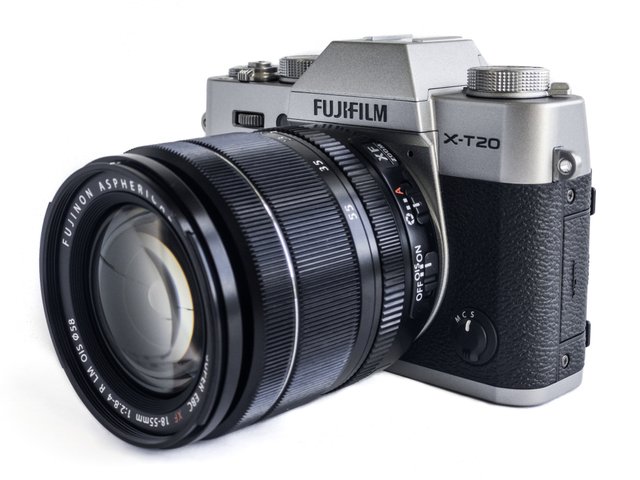
Plenty of X-T2-level specs at a keener price
Type: Mirrorless | Sensor: APS-C | Megapixels: 24.3MP | Lens mount: Fuji X | Screen: 3-inch tilting touchscreen, 1,040,000 dots | Viewfinder: Electronic | Continuous shooting speed: 8fps | Max video resolution: 4K | User level: Enthusiast
Excellent viewfinder
4K video recording
Only one card slot
Minor ergonomic issues
Fujifilm delivered far more than we expected with the X-T20, with much of the same tech as the co-flagship X-T2 inside a smaller and more affordable body. With a 24.3MP X-Trans CMOS III sensor, 4K video recording, 325 autofocus points and an 8fps burst shooting option, the camera is as capable on the inside as it is elegant on the outside. It's also compatible with a vast array of high-quality prime and zoom lenses, and many of these offer their own aperture rings, which sit as a perfect complement to the physical dials for shutter speed and exposure compensation on the body. All of this is strengthened by customisable controls and touchscreen operation, as well as Wi-Fi for remote control. Overall, one of the best mid-range options we've seen yet, and a very welcome addition to a series that's become popular for good reason.
Read more: Fujifilm X-T20 Review
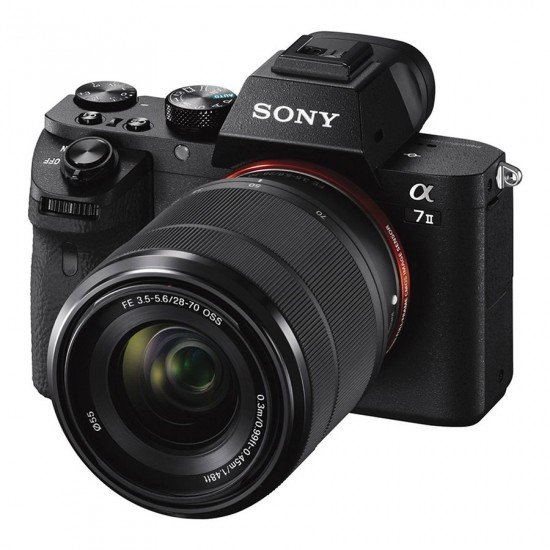
5. Sony A7 II
One of the most affordable full-frame cameras around
Type: Mirrorless | Sensor: Full frame | Megapixels: 24.3MP | Lens mount: Sony E | Screen: 3in tilting screen, 1,228,800 dots | Viewfinder: Electronic | Max burst speed: 5fps | Max video resolution: Full HD | User level: Enthusiast
One of the cheapest full-frame cameras
Sensor-based stabilisation
Limited lens range
Bigger and heavier than mark I
Sony’s A7 was the original full-frame mirrorless cameras, and while it broke new ground we did also have a handful of reservations. The mark II update moved things forward by way of a range of improvements, from a higher-quality LCD screen to a better build quality and various ergonomics changes, although the main point of difference is the inclusion of five-axis image stabilisation that works with all mounted lenses. This is a significant change that helps the camera to be a better performer in low light, and whenever you're using longer lenses. While it lacks the 4K video recording capabilities of its A7R II and A7S II brothers, the fact that it’s roughly half the price of those two models means that it offers far better value for money for those mainly concerned with shooting stills.
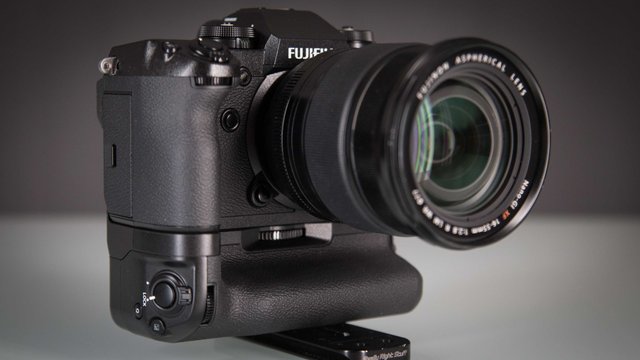
6. Fujifilm X-H1
A tried-and-tested sensor, masses of video options and superb handling, the X-H1 is a winner
Type: Mirrorless | Sensor: APS-C | Megapixels: 24.3MP | Lens mount: Fuji X | Screen: 3-inch vari-angle touchscreen, 1,040,000 dots | Viewfinder: Electronic | Continuous shooting speed: 8fps (up to 14fps) | Max video resolution: 4K | User level: Enthusiast/professional
Body-based image stabilisation
Excellent handling
A little pricey for an APS-C model
Bulky
It's difficult to know where to start with the X-H1; there's lots to love. On top of everything that made the X-T2 a winner – from its 24.3MP X-Trans CMOS III sensor and expansive AF options through to its three-axis LCD and multitude of physical controls – Fujifilm has ramped up the feature set to include body-based image stabilisation, a huge top-plate LCD and an even wider selection of options for videographers than before, including both DCI 4K and UHD 4K options. As we found in our review, the combination of the sensor and previously seen X-Processor Pro translate to very reliable image quality, with speedy autofocus and a clear OLED viewfinder to make the user experience as good as it can be. That image stabilisation and substantial grip do make for a slightly bulkier body than the X-T2, but if you use longer or heavier lenses you may well welcome this.
Read more: Fujifilm X-H1 Review
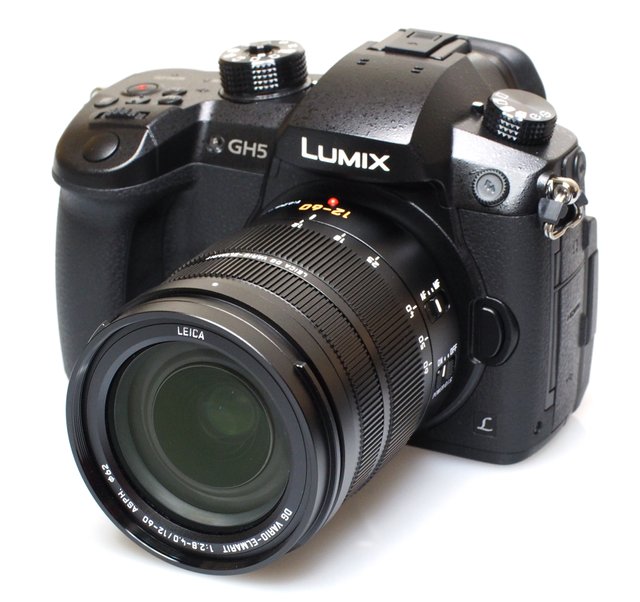
7. Panasonic GH5
Much more than just a boost to its video specs over its predecessor
Type: Mirrorless | Sensor: Micro Four Thirds | Megapixels: 20.3MP | Lens mount: Micro Four Thirds | Screen: 3-inch vari-angle touchscreen, 1,620,000 dots | Viewfinder: Electronic | Continuous shooting speed: 12fps | Max video resolution: 4K | User level: Enthusiast/professional
Excellent video specs
Superb 3.68million-dot EVF
Bulky body
410-shot battery life
Panasonic has carved itself something of a niche with its video-focused GH line, and while other manufacturers have caught up in offering 4K shooting, the GH5 still races ahead for video options overall. Yet, Panasonic hasn't overlooked the remainder of the camera's feature set, with its excellent OLED viewfinder providing a sharp and stable view, helped by a very effective image stabilisation system and a superb Depth-From-Defocus AF system bringing subjects to focus without delay. Despite the 20MP sensor, this does very much feel like a relatively futureproof camera that should be just as suitable for enthusiasts as it would be for those seeking to create broadcast quality recordings. It's not the smallest camera around, and its 410-shot battery life is bettered by even cheaper DSLRs, but when you consider just how well things like the EVF and image stabilisation work, you can see this juice going to good use.

8. Olympus OM-D E-M1 Mark II
60fps at full resolution, 4K video, superb image stabilisation – is there anything the OM-D E-M1 Mark II can't do?
Type: Mirrorless | Sensor: Micro Four Thirds | Megapixels: 20.4MP | Lens mount: Micro Four Thirds | Screen: 3-inch vari-angle touchscreen, 1,037,000 dots | Viewfinder: Electronic | Max burst speed: 60fps | Max video resolution: 4K
60fps at full resolution - amazing!
Great autofocus performance
MFT sensor smaller than rivals
Complex menu and control system
With its weather-sealed body, excellent image quality and a high degree of physical control and customisation, Olympus's first E-M1 was a smash. And with this, the follow up, the company ramped things up across the board. With video boosted to 4K quality, a revamped AF system and some of the most effective image stabilisation we've seen yet, the camera is a considerable upgrade over an already loved model. Another camera that gained a full five out of five from us upon being reviewed, it's a very credible camera for sports shooters, with 60fps burst shooting (at full resolution!), and even with autofocus enabled you can still manage 18fps. It might not be the easiest camera to get to grips with in terms of ease of operation, and the menu system needs a rethink, but these should not be deal-breakers.
Read more: Olympus OM-D E-M1 Mark II review

9. Sony A9
Possibly the most exciting camera we've seen yet from Sony
Type: Mirrorless | Sensor: Full frame | Megapixels: 24.2MP | Lens mount: Sony E | Screen: 3-inch tilting touchscreen, 1,440,000 dots | Viewfinder: Electronic | Max burst speed: 20fps | Max video resolution: 4K | User level: Professional
20fps at 24MP is remarkable
Fast and effective AF
Not exactly cheap
Lens range not as wide as DSLR rivals'
Ok, so the Sony A9 is admittedly a camera that only a handful of people will likely ever adopt for their own shooting, and those that do will have to part with the best part of £5000 for the body alone. It is, however, one of the most exciting mirrorless models we’ve seen in recent times, and its advantages over equivalent DSLRs arguably make it far better value for money. Taking the form of the company’s A7 lines as a starting point, it houses a 24.2MP full-frame sensor and a 693-point phase-detect AF system that covers around 93% of the frame, together with blackout-free shooting from the electronic viewfinder when shooting at up to 20fps and even 4K video to boot. See why we love it in more detail in our full review.
Read more: Sony A9 Review
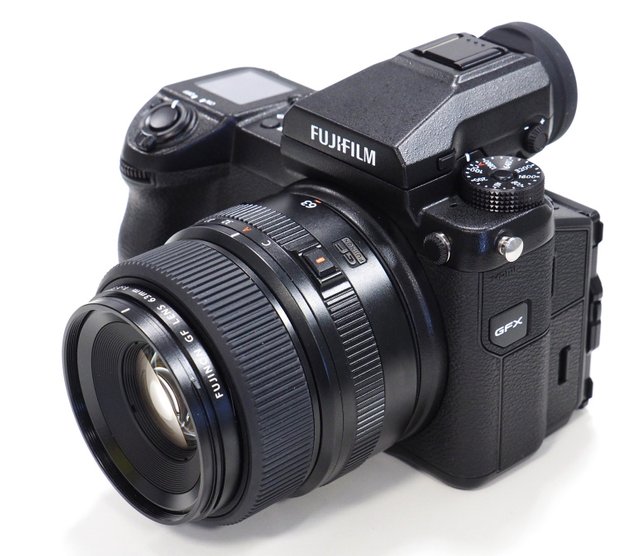
10. Fujifilm GFX 50S
If this is a sign of things to come, we're very excited
Type: Mirrorless | Sensor: Medium format | Megapixels: 51.4MP | Lens mount: G Mount | Screen: 3.2-inch tilting touchscreen, 2,360,000 dots | Viewfinder: Electronic | Max burst speed: 3fps | Max video resolution: Full HD | User level: Professional
Brilliant image quality
AF accuracy
Max flash sync speed
AF system is slow
Along with the Hasselblad X1D, the GFX 50S has kicked off a new breed of mirrorless cameras that make the medium format system far more practical for many. True, its price tag places it out of the reach of most, but it was launched at a far cheaper price than was expected for a medium-format system. Imbued with so much that we love from Fujifilm's X-series cameras, and blessed with a tilting 3.69M-dot EVF and new top-plate LCD, the camera was launched alongside a brand new series of lenses that already stretch over a broad range of focal lengths. It's image quality is truly superb, and for still-life, landscapes and other static subjects it looks set to be a very sought after camera.
Read more: The best full-frame DSLRs in 2017
Original post : https://www.digitalcameraworld.com/buying-guides/the-best-mirrorless-camera
By Matt Golowczynski